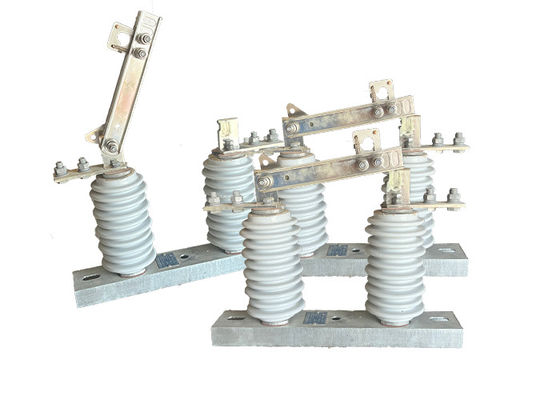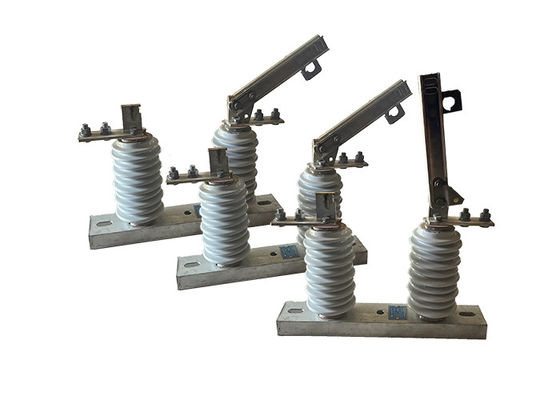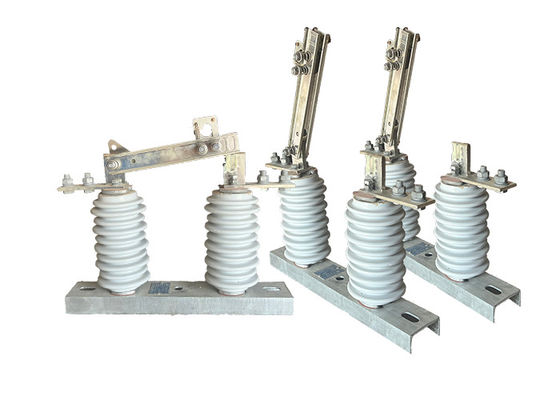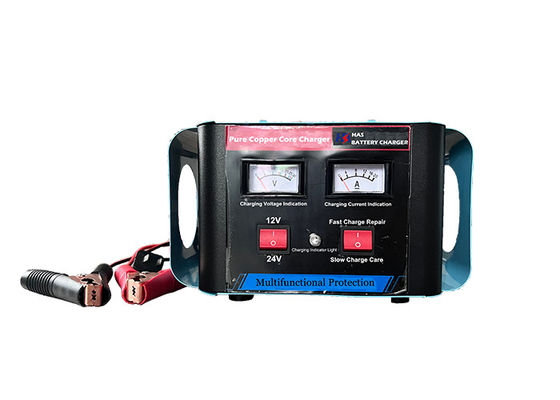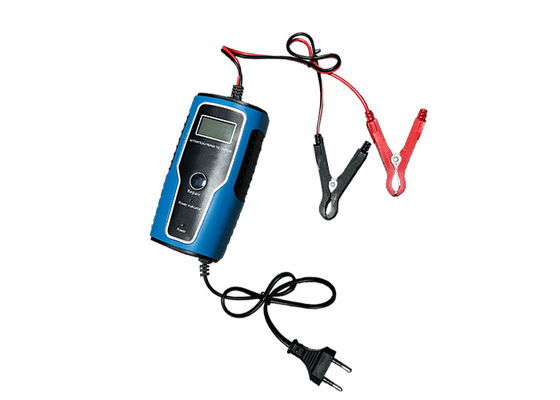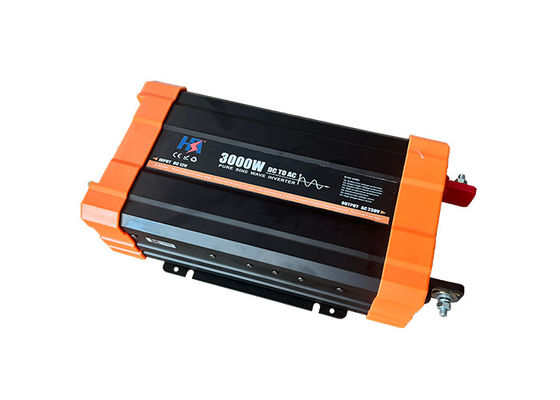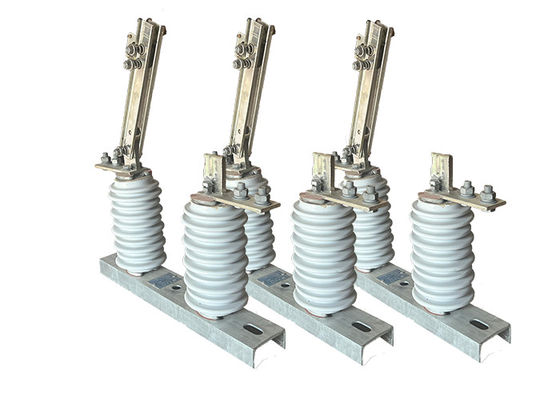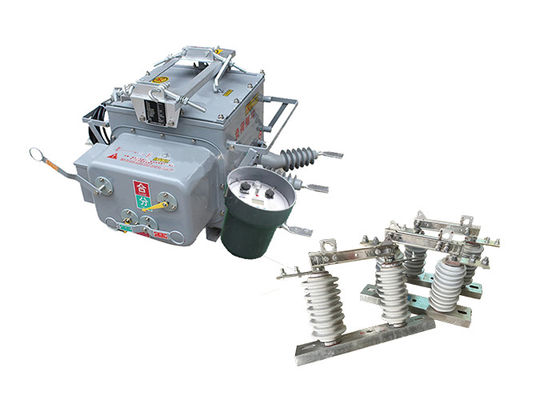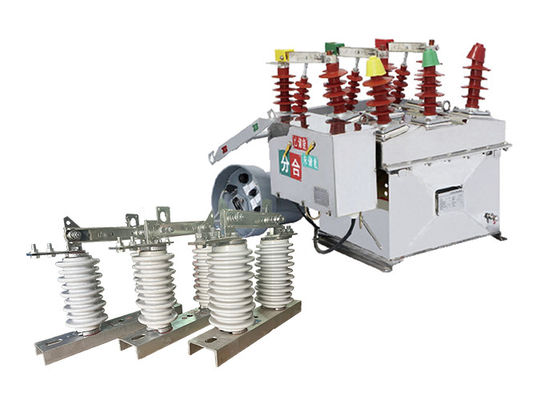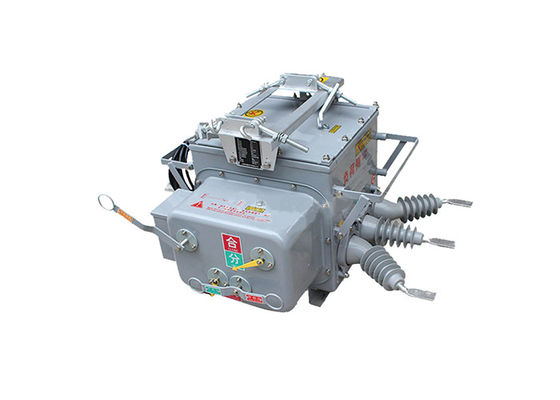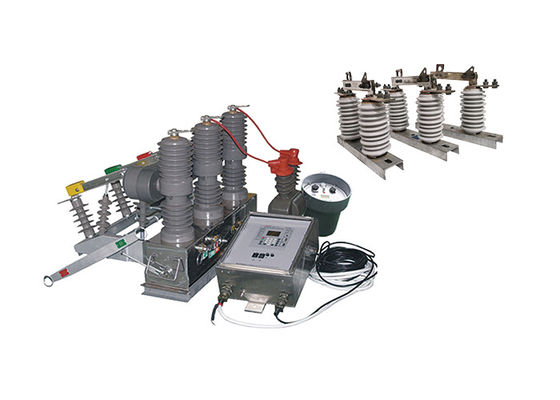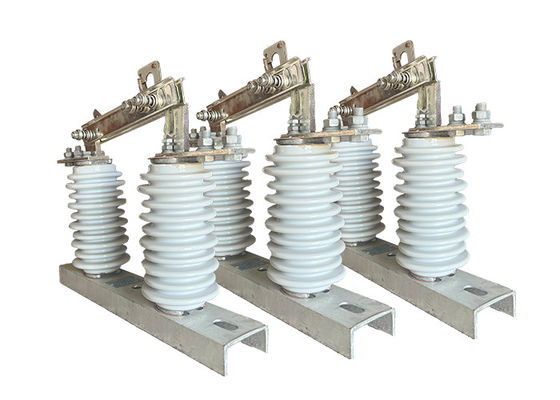1250A 12kV-36kV Hv Disconnect Switch Durable For Protecting Or Controlling Operated Automatically/Manually
Product Description:
High voltage disconnect switch is a portable, high-voltage electrical switch used to isolate electrical circuits for maintenance and repair purposes. It is typically used in medium to high voltage power transmission and distribution systems.
The high voltage disconnect switch is designed to be portable and can be easily transported to the location where it is needed. It is capable of handling high voltage levels, typically ranging from a few kilovolts to several hundred kilovolts.
The switch is used to isolate a section of the power system for maintenance or repair purposes. It has visual indicators that show whether the switch is open or closed, making it easier for operators to know the status of the circuit.
The high voltage disconnect switch can be used for a wide range of applications, including switching and isolating circuits, as well as for grounding and de-energizing equipment. It is designed with safety features to protect operators from electrical hazards, such as insulating materials that prevent accidental contact with live parts.
The switch is easy to use and requires minimal training to operate. It has interchangeable blades that can be easily replaced, allowing for greater flexibility and versatility.
Application:
1.Maintenance and Repair: The disconnector switch is used to isolate a section of the power line for maintenance or repair purposes. This allows maintenance personnel to work safely without risking electrocution.
2.Load Shedding: In the event of a power overload, the disconnector switch can be used to shed the load and prevent damage to the power line or equipment.
3.Fault Isolation: The disconnector switch can be used to isolate a section of the power line in the event of a fault, such as a short circuit or ground fault. This prevents the fault from spreading to other parts of the network and causing further damage.
4.Switching Operations: The disconnector switch is used for switching operations, such as connecting or disconnecting power sources or rerouting power to different parts of the network.
5.Protection: The disconnector switch is often used in conjunction with other protective devices, such as circuit breakers and fuses, to protect the power line and equipment from damage.
6.Renewable Energy: With the increasing use of renewable energy sources, such as wind and solar, disconnector switches are used to connect and disconnect these sources from the power grid.
Structure:
This product is composed of base (plate), post insulator, conductive part and interlock device. One end of the knife is installed on the dynamic contact knife head through bolts, and the other end of the knife is separately connected with the static contact head, and each side is maintained in a good contact state by the pressure of the compression spring. Each knife is slot-shaped type, which not only increases the heat dissipation surface of the knife, but also conducive to reducing the temperature rise, and improve the mechanical strength of the knife, making the dynamic thermal stability against short circuit. The interlocking parts installed at the non-rotating end of the contact knife and the static locking hook on the static contact constitute the opening locking device, which is self-locking when the brake is closed, so that the brake knife will not fall off by itself due to its own weight or the action of electric power, resulting in the opening of the brake without cause.
Safety Tips:
1.Always wear appropriate personal protective equipment (PPE) such as gloves, safety glasses, and flame-resistant clothing.
Before working on the switch, ensure that the power supply is turned off, and the switch is properly grounded.
2.Follow the manufacturer's instructions for operating the switch, and do not attempt to bypass safety features or use the switch for purposes other than its intended use.
3.When working on the switch, use insulated tools and equipment to prevent electric shock.
4.Avoid touching any conductive parts of the switch and keep a safe distance from the switch when it is in operation.
5.Never attempt to repair or modify the switch yourself unless you are a qualified and trained professional.
6.Keep the area around the switch clean and free of debris that may interfere with its operation.
7.Regularly inspect the switch for signs of wear or damage, and replace any damaged or worn parts as soon as possible.
8.Only authorized personnel should be allowed to operate or perform maintenance on the switch.
9.In case of an emergency, follow established emergency procedures and shut off power to the switch immediately.
Condition:
1.The altitude does not exceed 1000m
2.The ambient air temperature: Maximum+ 40'C ;Minimum:General Area -30'C, Paramos -40 C;
3.The wind pressure does not exceed 700Pa.(corresponding to 34m/s wind speed);
4.The earthquake intensity does not exceed 8 degrees;
5.The working situation is without frequent violent vibration;
6.The installation site of ordinary type isolator should be kept away form gas, smoke chemical deposition, salt-spray fog, dust
and other explosive and corrosive maters that affect seriously insulation and conduction capability of the isolator
7.Pollution-proof type isolator is applies to severe filthy conduction area, however, it shouldn't be any explosive matters and matters causing fire
Technical Parameters:
| Serial No. |
Parameter |
Unit |
Data |
| 1 |
Rated Voltage |
kV |
12 |
| 2 |
Rated Current |
Model No. |
(H)GW9-12(W)/630-20 |
A |
630 |
| (H)GW9-12(W)/1000-20 |
1000 |
| (H)GW9-12(W)/1250-31.5 |
1250 |
| 3 |
4s Short-time withstanding current |
Model No. |
(H)GW9-12(W)/630-20 |
kA |
50 |
| (H)GW9-12(W)/1000-20 |
50 |
| (H)GW9-12(W)/1250-31.5 |
80 |
| 4 |
Rated Insulation Level |
Lightning surge withstand voltage(peak) |
Polar-to-Earth
(Positive & Negative) |
kV |
75 |
Interfracture
(Positive & Negative) |
85 |
Industrial frequency withstand voltage
(1 min)
(Effective value) |
Dry Test/Wet Test |
Polar-to-Earth |
42(Dry)
34(Wet) |
| Interfracture |
48(Dry) |
| 48(Dry) |
48(Dry)
40(Wet) |
| 5 |
Main Circuit Resistance |
μ Ω |
630 |
| 1000 |
| 1250 |
| 6 |
Mechanical Life Time |
times |
50 |
| 50 |
| 80 |









 Your message must be between 20-3,000 characters!
Your message must be between 20-3,000 characters! Please check your E-mail!
Please check your E-mail!  Your message must be between 20-3,000 characters!
Your message must be between 20-3,000 characters! Please check your E-mail!
Please check your E-mail! 
